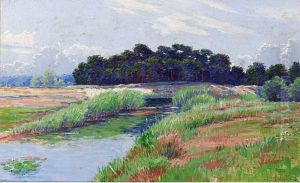Lucien Berthault Paintings
Lucien Berthault was a lesser-known French architect and city planner whose professional life spanned the early to mid-20th century. Born in 1881, Berthault was part of a generation of architects who were grappling with the challenges of urban growth and the destruction wrought by World War I.
Berthault pursued his education in architecture, a field that was undergoing significant changes during his formative years, influenced by a range of styles from Art Nouveau to the emerging International Style. After completing his studies, he embarked on his professional career, which was characterized by a combination of architectural practice and urban planning.
Although not widely recognized today, Berthault made contributions to the reconstruction efforts in France following World War I. Like many of his contemporaries, he was engaged in rebuilding towns and cities that had been devastated by the conflict. His work during this period would have involved the delicate task of balancing the preservation of historical architecture with the need for modernization to accommodate the changing needs of post-war society.
Berthault's career continued through the interwar period and into the early years of World War II. However, there is limited information on specific projects he may have undertaken during this time. The lack of widespread recognition may be due to the overshadowing influence of more prominent architects of the era, or it could be that his work was more functional and less iconic in nature.
Lucien Berthault passed away in 1951, leaving behind a legacy that, while not as celebrated as some of his peers, reflects the contributions of many such professionals to the rebuilding and modernization of France in the first half of the 20th century. His life's work is a reminder of the numerous unsung architects who played vital roles in shaping the environments of their time.

